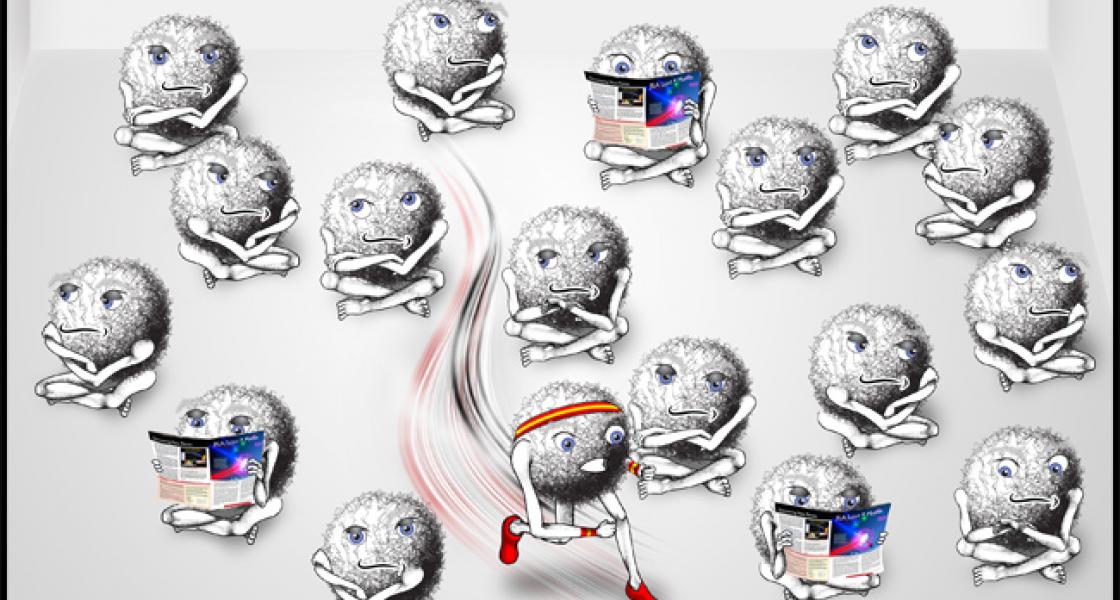What happens to a Bose-Einstein condensate (BEC) when its atoms interact strongly? One possibility for large attractive interactions is that the condensate shrinks and then explodes, as the Cornell and Wieman groups discovered in 2001. Another possibility for large repulsive interactions is behavior analogous to that of superfluid liquid helium. If superfluid liquid heliumlike dynamics could be observed and probed in strongly interacting atomic BECs, it would help bridge the gap between the physics of superfluid liquids and ultracold atoms.
Whatever happens, there’s a whole lot of ultracool physics to explore in BECs with strong atomic interactions. JILA’s BEC collaboration recently embarked on this exciting search. Newly minted CU Ph.D. Scott Papp (Wieman group) and graduate students Juan Pino (Jin group) and Robert Wild (Cornell group) have used Feshbach physics to create a strongly interacting BEC and probe it with Bragg spectroscopy.
To prepare for Bragg spectroscopy, researchers change the magnetic field around an ordinary everyday BEC. Until the magnetic field changes, the atoms in the condensate have been pretty much ignoring each other (even though they have been singing a single pure, very large tone). With the change in magnetic field, the atoms suddenly start “talking” with each other via a large scattering length.
Once the BEC becomes strongly interacting, researchers can perform Bragg spectroscopy. They quickly direct two red laser beams into the BEC from opposite sides of condensate. (They have to work fast because a strongly interacting BEC will “melt” as collisions rapidly warm it up, sending
hot atoms flying away.) Luckily, lasers are fast. The counter-propagating beams impart energy and momentum to a small fraction (10%) of the atoms in the condensate. This energy and momentum spread throughout the condensate via collisions. Then, the scientists take a picture of the whole condensate to see how its momentum has grown. The picture gives them enough information to determine the BEC’s available energy and momentum states.
When the experiment was finished, Papp and his colleagues enlisted the aid of theorist Shai Ronen, a postdoc in the Bohn group. Ronen helped them adapt several different theoretical descriptions of interacting BECs for direct comparison with the new experimental data. This comparison underscored the need for a better theory describing the behavior of a strongly interacting BEC.
The existing theories proved inadequate because the problem of a BEC with strong interactions is a difficult one. In attempting to describe strongly interacting systems, theorists had to make different simplifying assumptions such as ignoring the tendency of strongly interacting BECs to form molecules. In light of the new experimental data, such assumptions have been called into question.
The recent experiments and their comparison with theory have opened up a rewarding new direction in ultracold matter research. Pino has taken over the experimental reins and plans to look for similarities between a strongly interacting BEC and superfluid liquid helium. In particular, he wants to track down exotic and elusive rotons, if they exist. No one actually knows what they are, but rotons have been observed in superfluid liquid helium. Fellows Eric Cornell and Debbie Jin hope this ground-breaking experimental work will entice theorists to take an interest in the new system. - Julie Phillips




